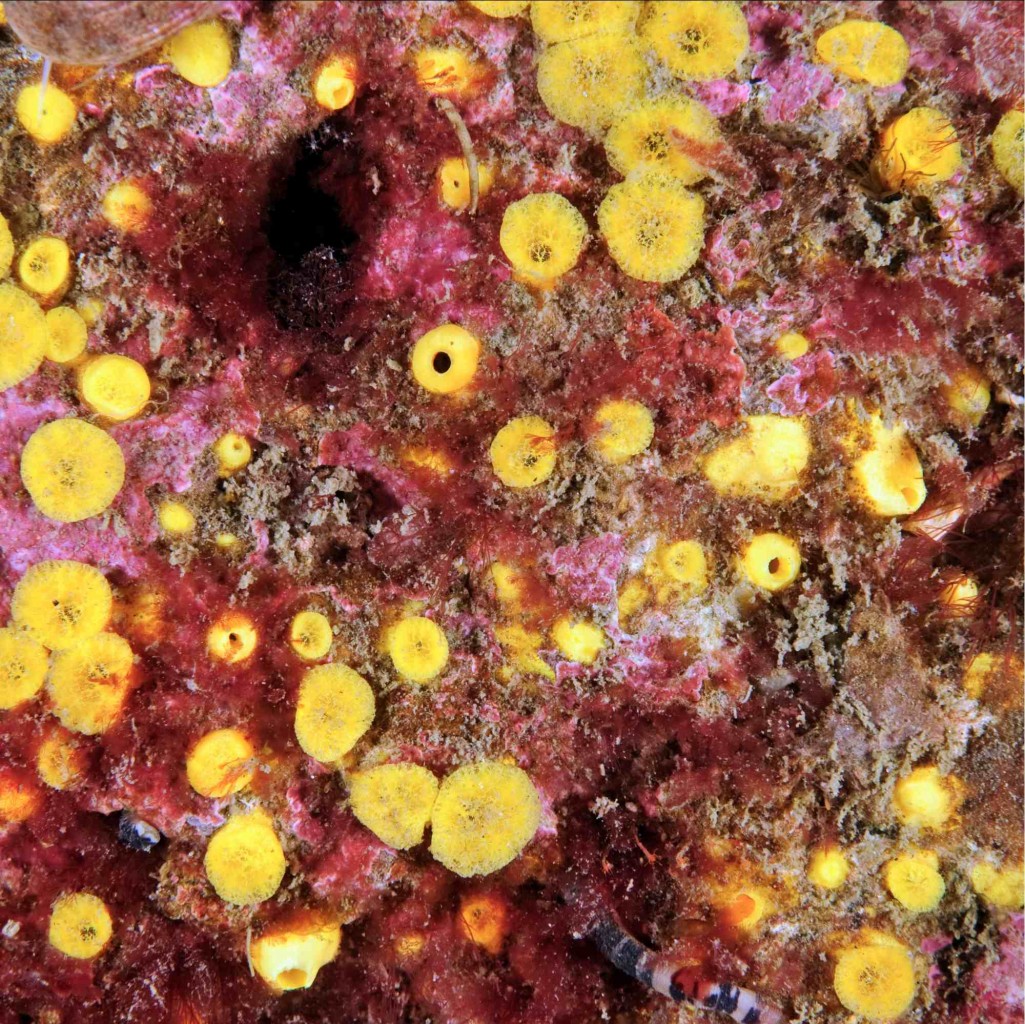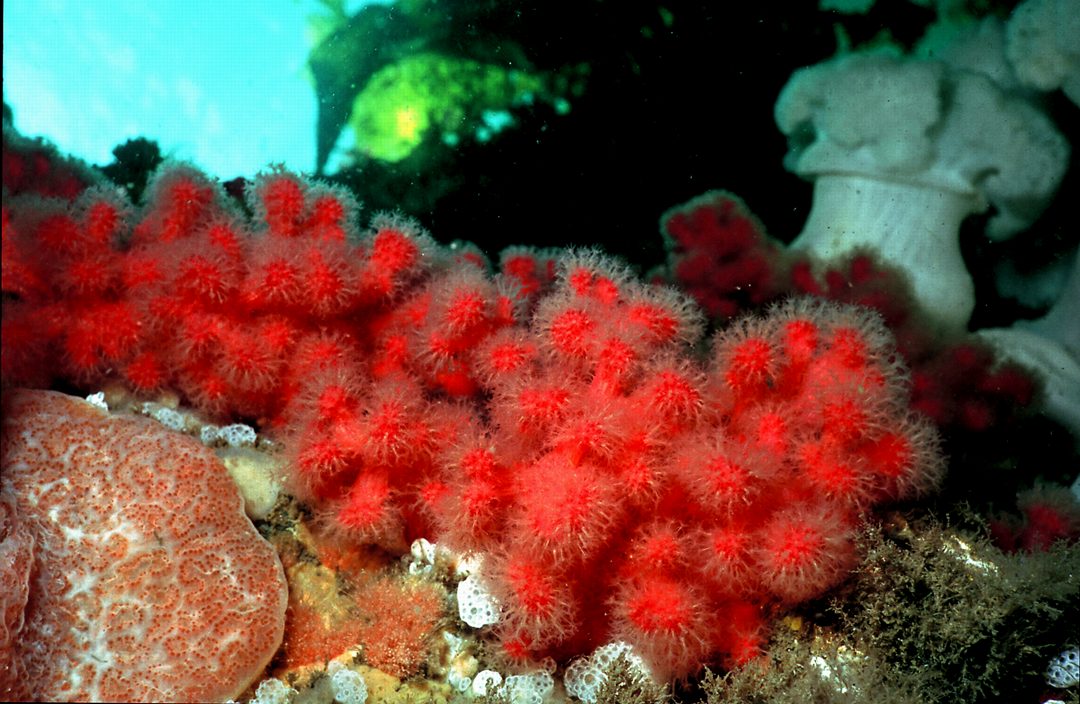
Cliona celata: This closeup image was taken by Ryan Murphy in May 2010. Clicking on the image gives a very large magnification. Clicking on the image below gives a sample of that level of magnification.
- small white unidentified hydroids
- These images show hydroids which are living in association with Cliona and the scallop.
Domain Eukarya
Kingdom Animalia
Phylum Porifera
Class Demospongiae
Order Hadromerida
Family Dysideidae, Tetilla
Genus Cliona
Species celata
Common Name: Boring sponge
Cliona celata is lobular in shape with wart like projections on it surface. This species is commonly found in colonies and the portions of the colony showing at the surface have projections appearing as yellow in color. They are evenly distributed on the sponge and are inhalent and seive like. Below the surface, the Cliona celata shell may look like a honeycomb. Cliona celata is commonly referred to as the boring sponge because it bores into soft limestone, using an acid digestion technique thus forming systems of interconnecting chambers within the matrix of the substrate

The opened up hinge area of the Purple Hinged Rock Scallop. Calliostoma is the snail and Metridium is the anemone. G.Fletcher photo.
The sponge can also bore as a parasite into mollusc and barnacle shells. It is common on many of the purple hinged rock scallops that we see underwater at Race Rocks.
At Race Rocks, the boring sponge is commonly found around the Rosedale Reef area. Its exhibits a biotic association with the purple -hinge rock scallop (Hinnites giganteus ) . Below is a picture of a complete rock scallop with small yellow dots where the sponge is located.

Boring sponges are the small yellow dots on the outside of this live Rock Scallop which measures 18 cm in diameter.
References: As of 2001
http://web.ucs.ubc.ca/csmecher/demospon.htm
http://www.diveinfo.com/porifera
http://www.itsligo.ie/biomar/porifera/clicel.htm
Kozloff, Eugene.N, Keys to the Marine Invertebrates of Puget Sound, the San Juan Archipelago, and Adjacent Regions; University of Washington press, 1974.
Other Members of the Phylum Porifera at Race Rocks.
and Image File |
 The Race Rocks taxonomy is a collaborative venture originally started with the Biology and Environmental Systems students of Lester Pearson College UWC. It now also has contributions added by Faculty, Staff, Volunteers and Observers on the remote control webcams. Dec. 2001–Misozi Phiri PC year 27 The Race Rocks taxonomy is a collaborative venture originally started with the Biology and Environmental Systems students of Lester Pearson College UWC. It now also has contributions added by Faculty, Staff, Volunteers and Observers on the remote control webcams. Dec. 2001–Misozi Phiri PC year 27 |
;










